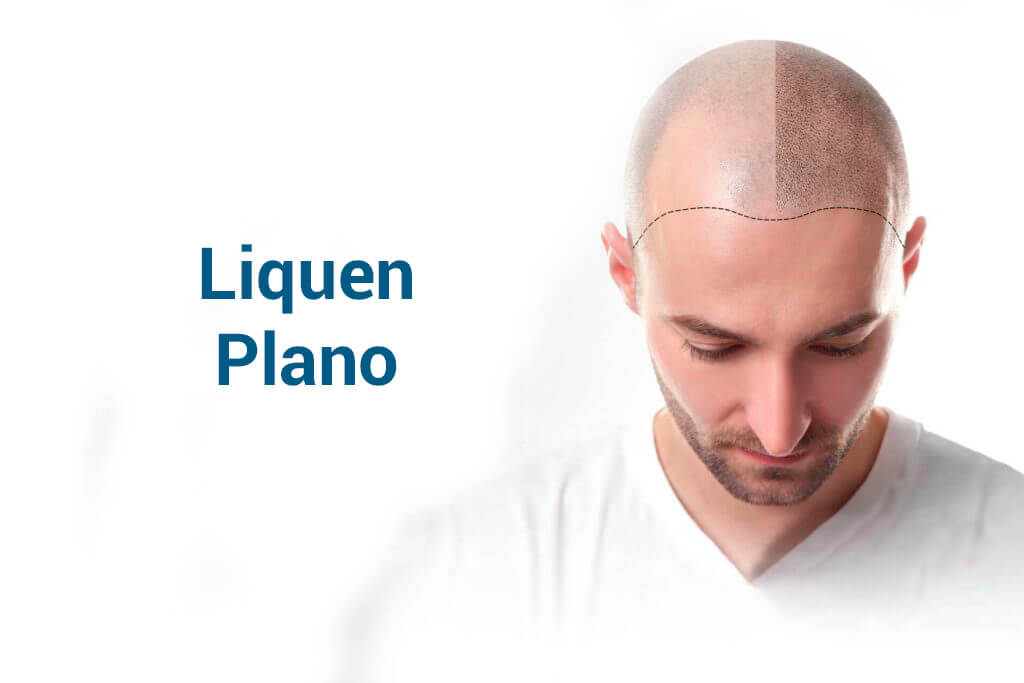LIQUEN FLAT
One of the pathologies that may be causing you to lose hair is lichen planus. It is a disease that still raises some doubts and that, undoubtedly, due to its location, can have a very negative effect on the appearance and, more importantly, the health of our hair.
What is lichen planus?
This is an inflammatory skin disease that mainly affects the head, including the scalp, mucous membranes, hands, ankles, feet and genitals. Depending on the area where it occurs, there are different types, of which the one we are interested in is lichen planus pilaris, i.e. hair lichen. This, in turn, can be divided into various subtypes.
Do you want to get your hair back? We have the perfect solution for you!
Symptoms of lichen planus
The symptoms of this pathology are obvious and correspond perfectly to its name, as lesions with a lichen plant-like appearance appear. There are plaques (on mucous membranes) and reddish, purplish, polygonal, itchy papules. In areas where there is no mucosa, skin dryness occurs.
As these rashes heal, the skin becomes brownish or even bluish or blackish.
Due to the similarity of symptoms with other diseases and pathologies such as keratosis, vulvar pemphigus, a drug reaction, leukoplakia, psiriasis or lupus erythematosus, the ideal is to opt for a biopsy to enable us to make a diagnosis of lichen planus. For this, the sample should show no signs of dysplasia, hydropic degeneration and infiltration of cells down to the subepithelial layer.
In the case of lichen pilaris, we have small red blisters as well as completely smooth white patches, which show up in the areas where the hair has fallen out, so that we can perfectly see a bare patch of scalp delimited by a thin, scaly, reddened line.
Burning or itching may occur but is not always present, with the possibility of purely visual symptoms.
Causes of lichen planus
Its appearance is essentially a reaction of the immune system, which sends T-cells to attack the cells in the area.
On many occasions, its appearance has been linked to an allergy to various drugs, although this is not the only or most common cause. Acute cases of stress and hepatitis C are also related to the appearance of lichen planus.
Treatment for lichen planus
Unfortunately, there is no cure for lichen planus, let alone the pillar, as it has managed to wreak havoc on our hair follicle, preventing new hair growth.
This means that the resulting alopecia is of the scarring type, i.e. irreversible.
What we can do is reduce the inflammation caused in our skin and manage to keep the pathology in a state of latency, although neither the pathology nor the effects it has caused disappear.
Steroids, immunosuppressive drugs, retinoids, dapsone, hydroxychloroquine and tacrolimus are used to treat it.
